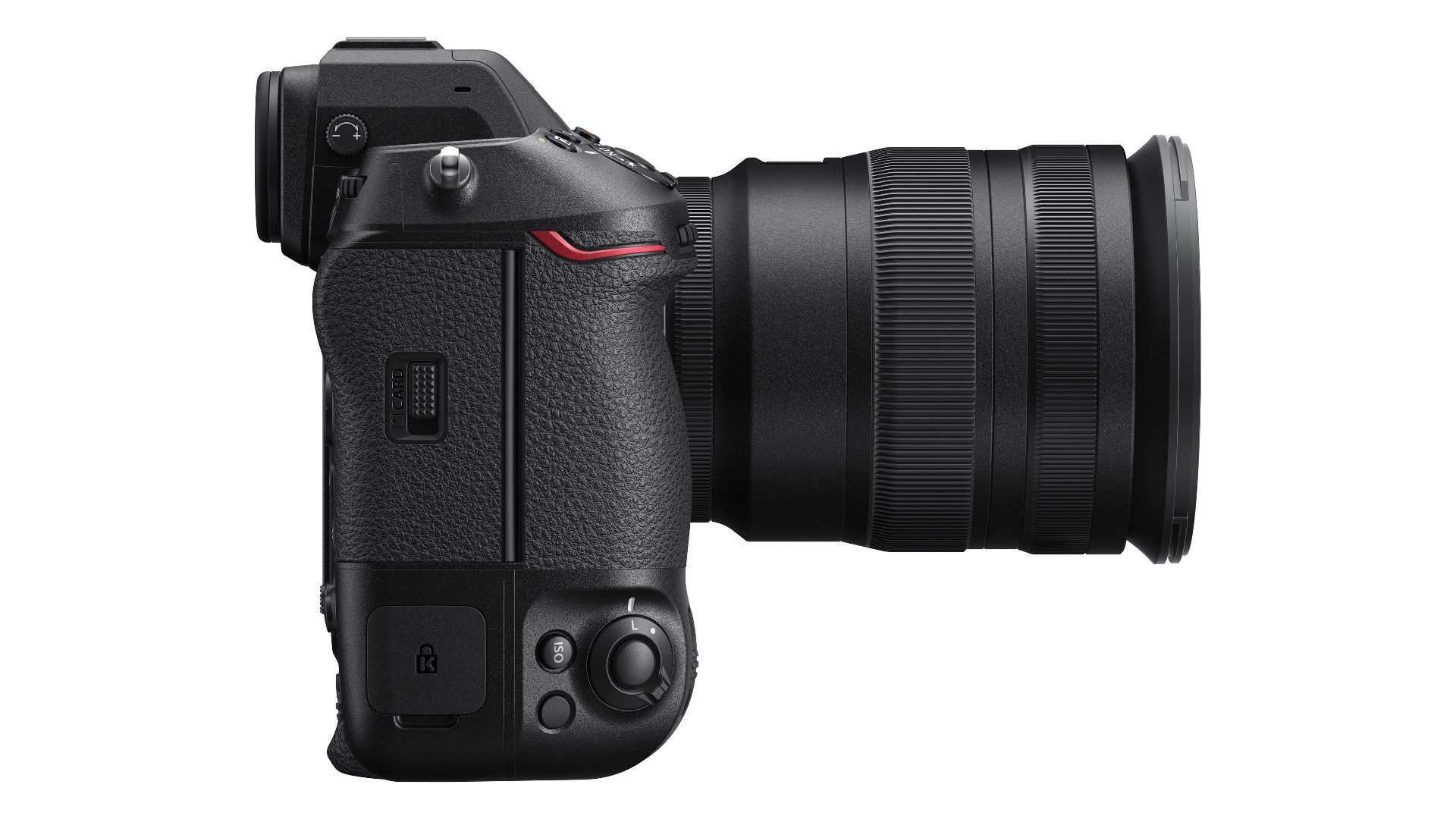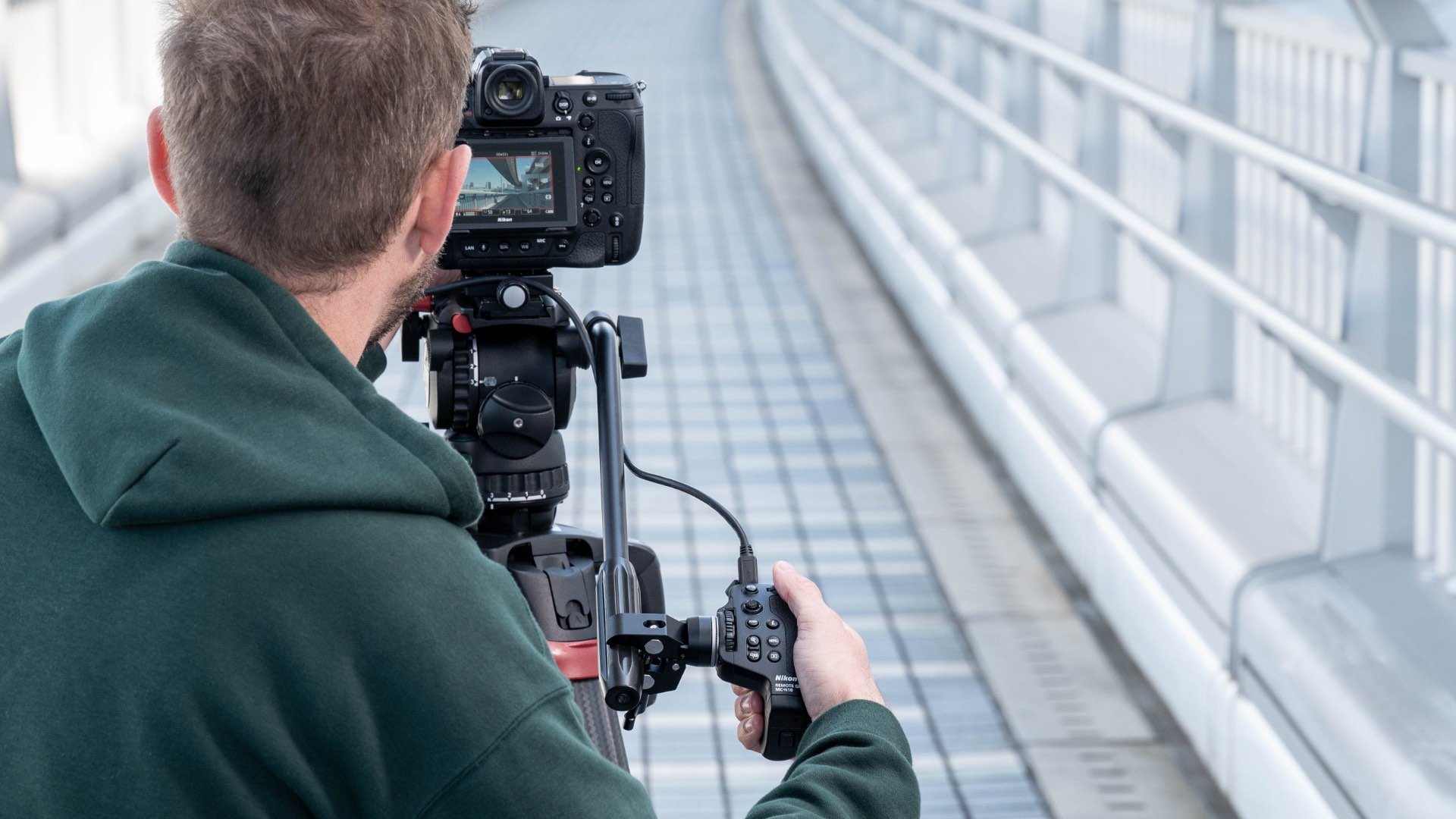
Free firmware upgrade on April 20 adds new pro cinema and video production capabilities to the Nikon Z 9, plus features for fast-action photography, and more.
Nikon has announced some fairly hefty new feature additions for its already well-regarded Z 9 that amp up its appeal to video shooters, as well as firmware updates for the Nikon Z 7II & Nikon Z 6II full-frame mirrorless units. It has also announced that it’s developing a new remote grip, the MC-N10.
Let’s start where we should with the Z 9. Leading the enhancements here are new capabilities for cinema and video capture, largely the addition of 12-bit internal raw video recording in a variety of different frame rates and resolutions, as well as some useful looking functionality and interface adjustments made specifically for videographers.
Footage can now be captured at up to 8.3K 60p with Nikon’s new N-RAW format, or up to 4.1K 60p in ProRes raw HQ (with the small caveat that use of Nikon ProGrade Digital COBALT memory cards is recommended to ensure this goes smoothly). The new N-RAW (.NEV file) is interesting as it crams all the depth and detail of 12-bit raw video into a file that’s billed as half the size of equivalent ProRes RAW HQ files, resulting in a lighter workflow. Post support so far comes from the latest versions of Edius and Resolve.
N-RAW footage can be recorded in the following formats: 8.3K 60p, 24p, or 4.1K 120p, 60p, 30p, 24p while in full frame/FX mode; 3.8K 120p with a 2.3x Crop; or 5.3K 60p, 30p, 24p with a DX (1.5x) crop. The format also creates an mp4 proxy file, which is efficient for previewing, quick transfers, or edits on the fly. And 4K UHD 60p footage can now be oversampled from 8K footage, allowing for the sharpest and cleanest possible 4K content.
Elsewhere in the video area, a Red “REC” frame indicator on the monitor and viewfinder has been added during recording to easily identify when video is being captured; a Waveform monitor has been added to confirm the brightness levels and position of the subject while recording; and a new dedicated video info display gives various video recording settings at a glance, such as frame size and rate, audio settings, codec, bit depth and HDMI output settings, all of which can be confirmed on a single screen. Additionally, a frame rate/size display on the top control panel helps to confirm when the rear monitor is difficult to view.
A “Fine ISO control (Mode M)” enables exposure adjustment in increments of 1/6 EV for ultra-precise and smooth changes in exposure; the Fast AF-ON function allows a user to assign different AF speeds to separate controls with two speeds assignable on customizable buttons to improve video shooting efficiency; and the shutter speed can be set at a slower than 1/frame rate to enable slow shutter video recording of extremely dark scenes or intentionally introduce blur when shooting video in M mode.
Still upgrades and more
Nikon hasn’t finished there either, as there’s a whole raft of new features for stills shooting. For the first time in a mirrorless full frame camera, Pre-Release Capture allows for the burst capture of images up to a full second before the shutter is fully pressed. Twenty types of Custom Wide-Area AF selection patterns have also been added, giving the user more control over what part of the frame they want to focus on, which can also work in conjunction with subject detection. This is going to be useful for a variety of sports and situations, while twelve additional patterns are available for video capture.
A new Retouch menu feature “Motion Blend” creates an in-camera overlay from a series of subject movements from continuous shooting into a single picture in-camera. Nikon gives the example of a snowboarder’s aerial being captured from start to finish sequentially in one finished frame, so expect to see quite a lot of this sort of thing once shooters get their hands on it.
AF stability, tracking performance, and subject detection in low-light situations have been enhanced, while for capturing star trails and long exposures, Firmware 2.0 enhances the Z 9’s Long Exposure display to include a live count of the exposure time. Users also can now dim the viewfinder further and with greater precision to preserve power and their night vision.
Firmware 2.0 adds the high fps viewfinder display function to increase the refresh rate to 120 fps for an even smoother, more lifelike view win the EFV. Auto Exposure (AE) has been enhanced to have more stable exposure with human faces, such as when a subject turns away from the camera and then faces it again, or when the composition changes.
Nikon Z 6II and Z 7II upgrades and a new remote grip
Moving on to other cameras, firmware version 1.40 for the Nikon Z 7II and Z 6II has improved AF performance. This update will enhance the stability of the AF, preventing the focus point from unintentionally moving to the background. The ability to emulate linear focus with select lenses will also be added while manually focusing, so that users can smoothly adjust the focus position as intended with an operational feeling similar to cinema lenses. This firmware update also supports the ML-L7 Remote Control.

Finally, in what is an exhaustive list, Nikon has announced that the development of a new MC-N10 Remote Grip is underway (above), an accessory that allows the remote control of Nikon Z-mount mirrorless cameras via a wired connection. It can control various functions of Nikon mirrorless units, increasing the efficiency of video recording with a small crew and expanding the possibilities of video recording. It also supports still shooting. Further details, including pricing and availability will come at a later date.
For the meantime, the new firmware updates will be available to download for free starting on April 20, 2022 at Nikonusa.com, and via the SnapBridge app soon afterwards.
Tags: Production


Comments